Sony WF-1000XM4 vs. Bose QuietComfort Earbuds: Which wireless earbuds should you buy?
Our Sony WF-1000XM4 vs. Bose QuietComfort Earbuds breakdown will determine the better wireless ANC earbuds.
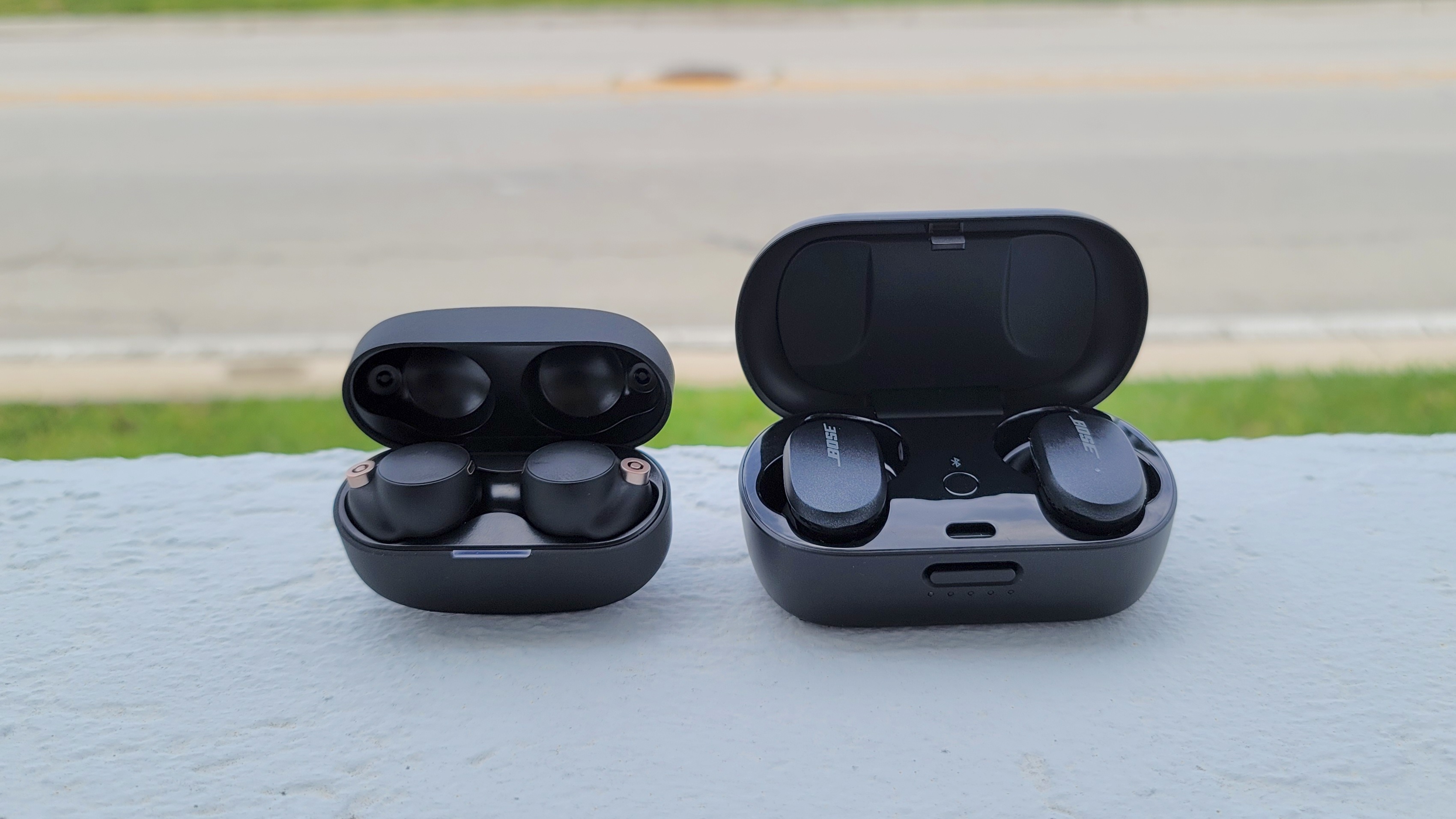
This Sony WF-1000XM4 vs. Bose QuietComfort Earbuds face-off breaks down two of the best noise-cancelling earbuds, helping you decide which pair to buy based on overall performance and value.
Highly anticipated before release, now that we've used the Sony WF-1000XM4 we can tell you that these buds are the real deal. Enhanced sound, stronger active noise cancellation, more features, and longer battery life show that Sony wasn’t pulling any punches. The company even went as far as introducing an all-new “ergonomic surface design for a more stable fit.”
- The best wireless earbuds you can buy
- More of the best cheap wireless earbuds
- Sony WF-1000XM4 vs. Sony WF-1000XM3: Should you upgrade?
A category leader in ANC, at least in the true wireless space, the Bose QuietComfort Earbuds pull off the incredible feat of blending the award-winning noise neutralization of the Bose 700 into a smaller design. These buds also come with satisfying sound, unbeatable call quality, and personalized features via companion app.
These are two premium noise-cancellers that deliver high performance. Which is the better splurge? Read our Sony WF-1000XM4 and Bose QuietComfort Earbuds analysis to find out.
Sony WF-1000XM4 vs. Bose QuietComfort Earbuds: Specs compared
| Header Cell - Column 0 | Sony WF-1000XM4 | Bose QuietComfort Earbuds |
|---|---|---|
| Price | $279 | $279 |
| Wireless charging | Yes | Yes |
| Chip | Sony V1 | Qualcomm |
| Battery Life (Rated) | 8 hours (ANC on), 12 hours (ANC off), 24 hours (with charging case), 36 hours (with charging case and ANC off) | 6 hours, 18 hours (with charging case) |
| Water Resistance | IPX4 | IPX4 |
| Case Size | 2.4 x 1.5 x 1.1 inches | 3.5 x 2 x 1.3 inches |
| Case Weight | 2 ounces | 2.7 ounces |
| Special features | Active noise cancellation, transparency mode, Speak-to-Chat, customizable EQ, 360 Reality Audio, DSEE Extreme upscaling, LDAC, Bluetooth 5.2, tri-digital assistant support (Alexa, Google Assistant, and Siri), quick charging | Adjustable active noise cancellation, Active EQ technology, Transparency Mode, Bluetooth 5.1, Self Voice calling mode |
Sony WF-1000XM4 vs. Bose QuietComfort Earbuds: Price
Both sets of buds retail for $279, placing them at a luxury price point and higher than other category favorites such as the AirPods Pro ($249) and Samsung Galaxy Buds Pro ($199).
The Sony WF-1000XM4 offers more bang for the buck with a stacked feature set that you won’t find on any other pair of wireless earbuds. Some feel the Bose QuietComfort Earbuds are overpriced based on the amount of extended functionality they grant. However, bear in mind that what you’re really paying for is Bose’s first-rate noise cancellation.
It’s rare to find the QuietComfort Earbuds on sale, though we did just find them for as low as $179 at Staples (while supplies last) at Staples. As a newer release, the WF-1000XM4 isn’t expected to receive a generous discount any time soon.
For all of the latest Bose and Sony headphones sales, be sure to bookmark our best headphones deals pages.
Winner: Sony WF-1000XM4
Sony WF-1000XM4 vs. Bose QuietComfort Earbuds: Design
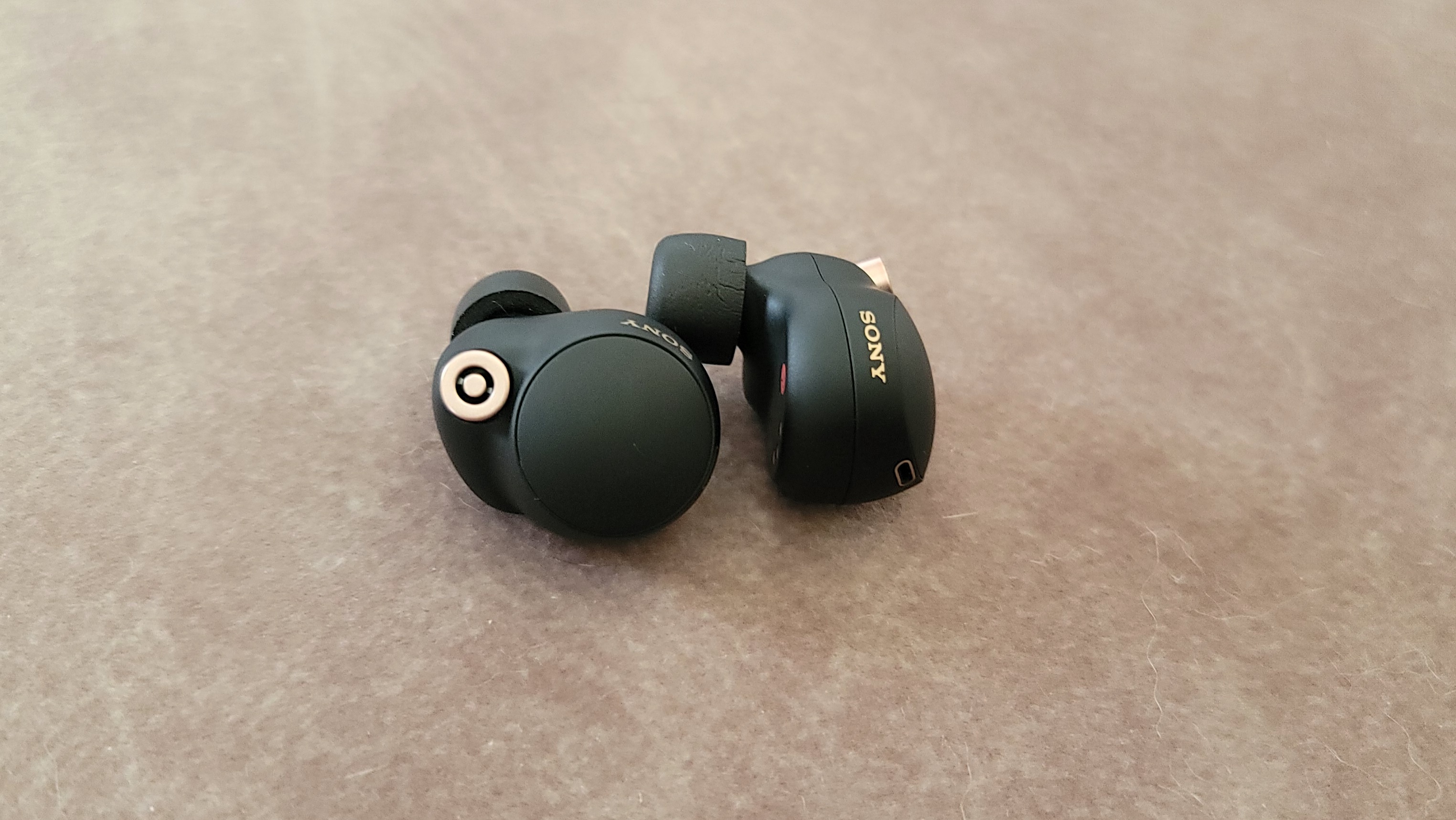
Sony went back to the drawing board when constructing its latest true wireless creation, ditching the elongated shape of the Sony WH-1000XM3 for something more discrete and practical. Oval-shaped casing, larger touch panels, and copper ANC mic housings make up the WF-1000XM4’s appearance. These buds come with an IPX4 rating for sweat and water resistance as well. All in all, this revamp is classier, sturdier, and more flattering on the ear.
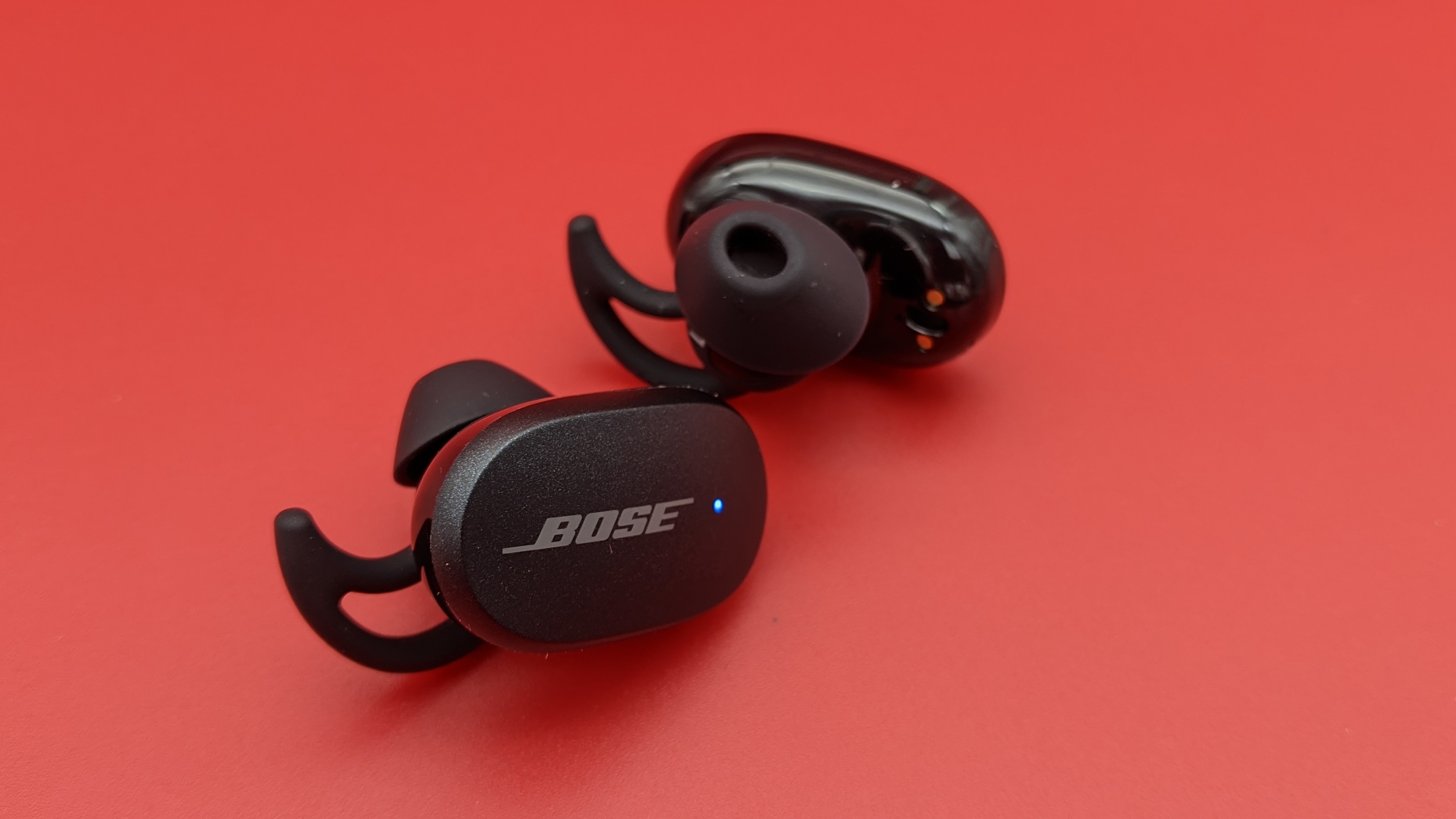
We thought that Bose would have flexed some ingenuity when designing the QuietComfort Earbuds, especially after setting a precedent with the ultramodern looking 700 Headphones. Well, the end result is striking, and not in a positive way. It’s too bulky, heavy, and not stylish.
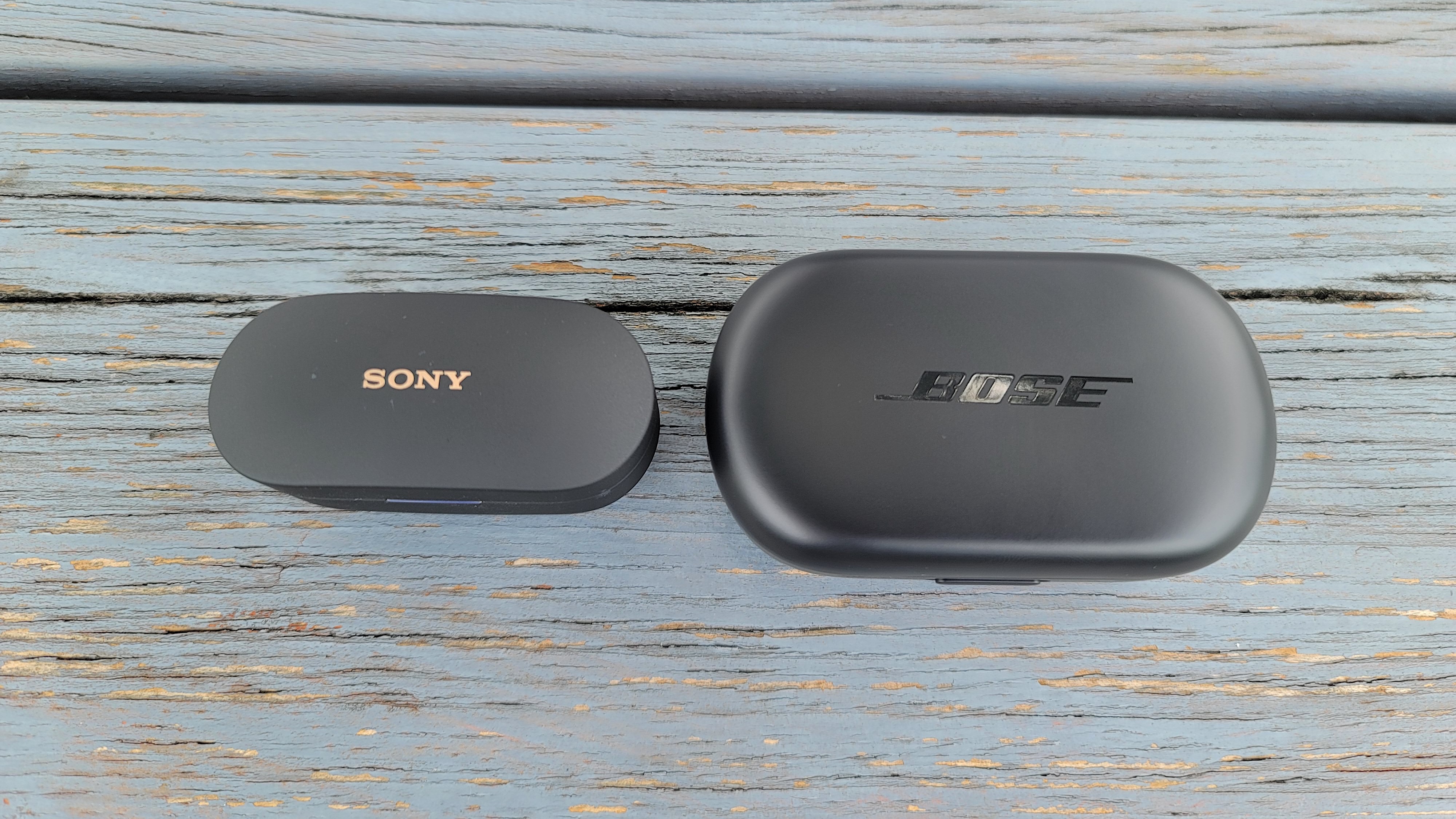
Sony has the more attractive and portable-friendly charging case, bearing resemblance to the WF-SP800N case, but with several modifications. The buds lay completely flat in their charging ports, while the LED on the front to indicate battery level and pairing status is larger and the lid has a gold Sony logo. You can slide it in any denim pocket and not feel weighed down. Don’t get us started on Bose’s charging case: the largest and heaviest case in its class.
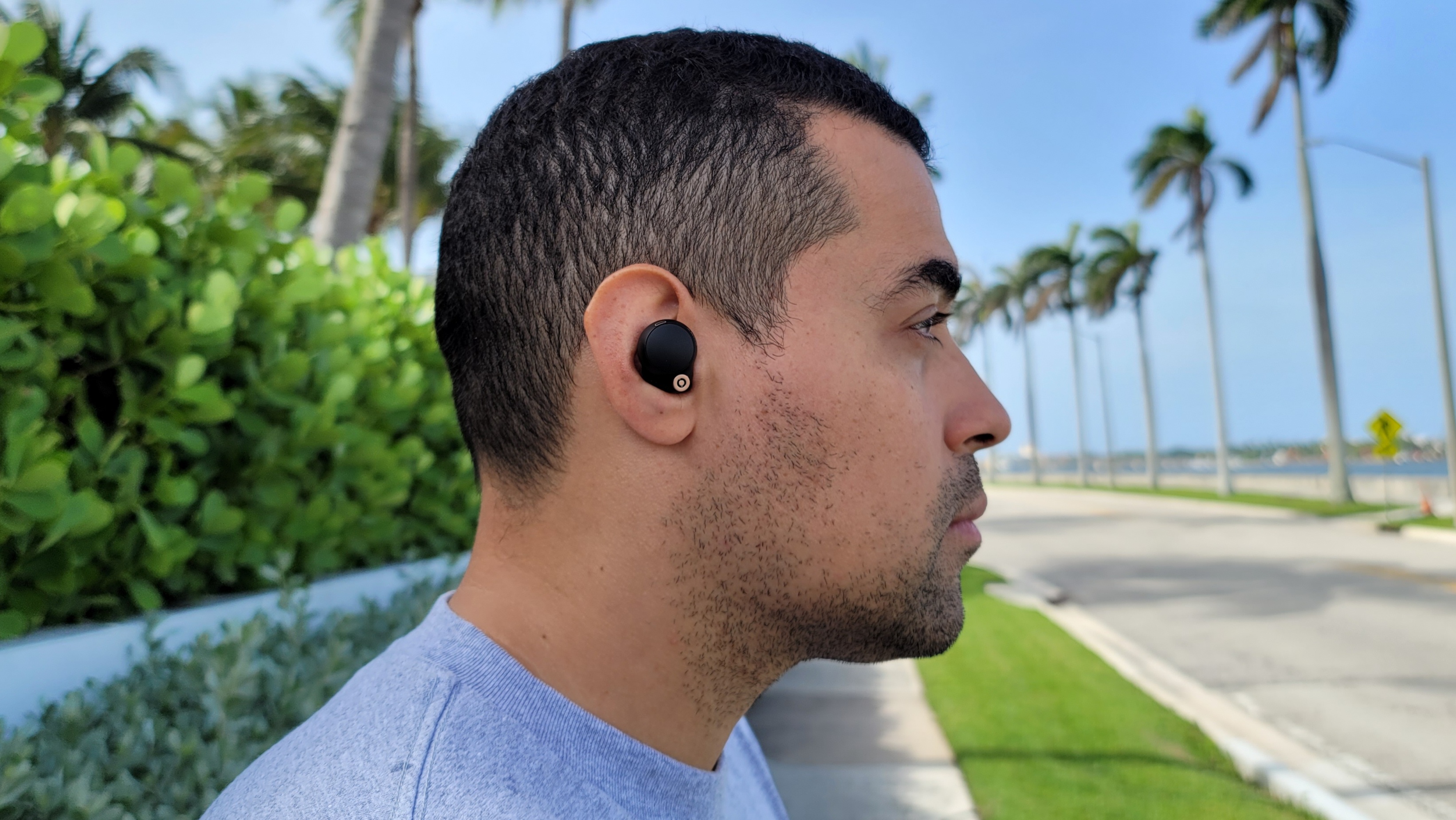
Sony’s redesign was also intended to provide better on-ear stability, but the installed memory foam tips don’t create the secure, air-tight fit that was advertised. We recommend the bundled silicone tips and trying Sony’s Optimal Earbud Tips test for feedback on how to achieve a proper fit. Something else worth noting is that the sound port is very long and needs to be pushed in deep to fill the ear cavity. Doing this will apply unwanted pressure to the concha.
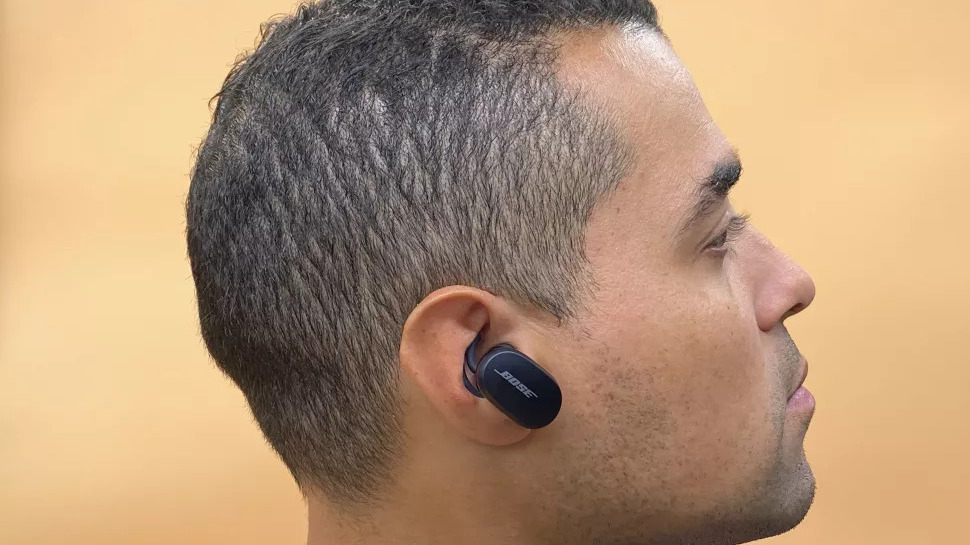
Wearing the QuietComfort Earbuds feels daunting at times, due to the enormous size of each bud. The sound port presses into the concha and causes discomfort that intensifies the longer you wear the buds; we suggest giving your ears a breather every hour. Fit isn’t a problem, as Bose’s proprietary StayHear Max silicone ear tips lock the buds in.
Winner: Sony WF-1000XM4
Sony WF-1000XM4 vs. Bose QuietComfort Earbuds: Controls
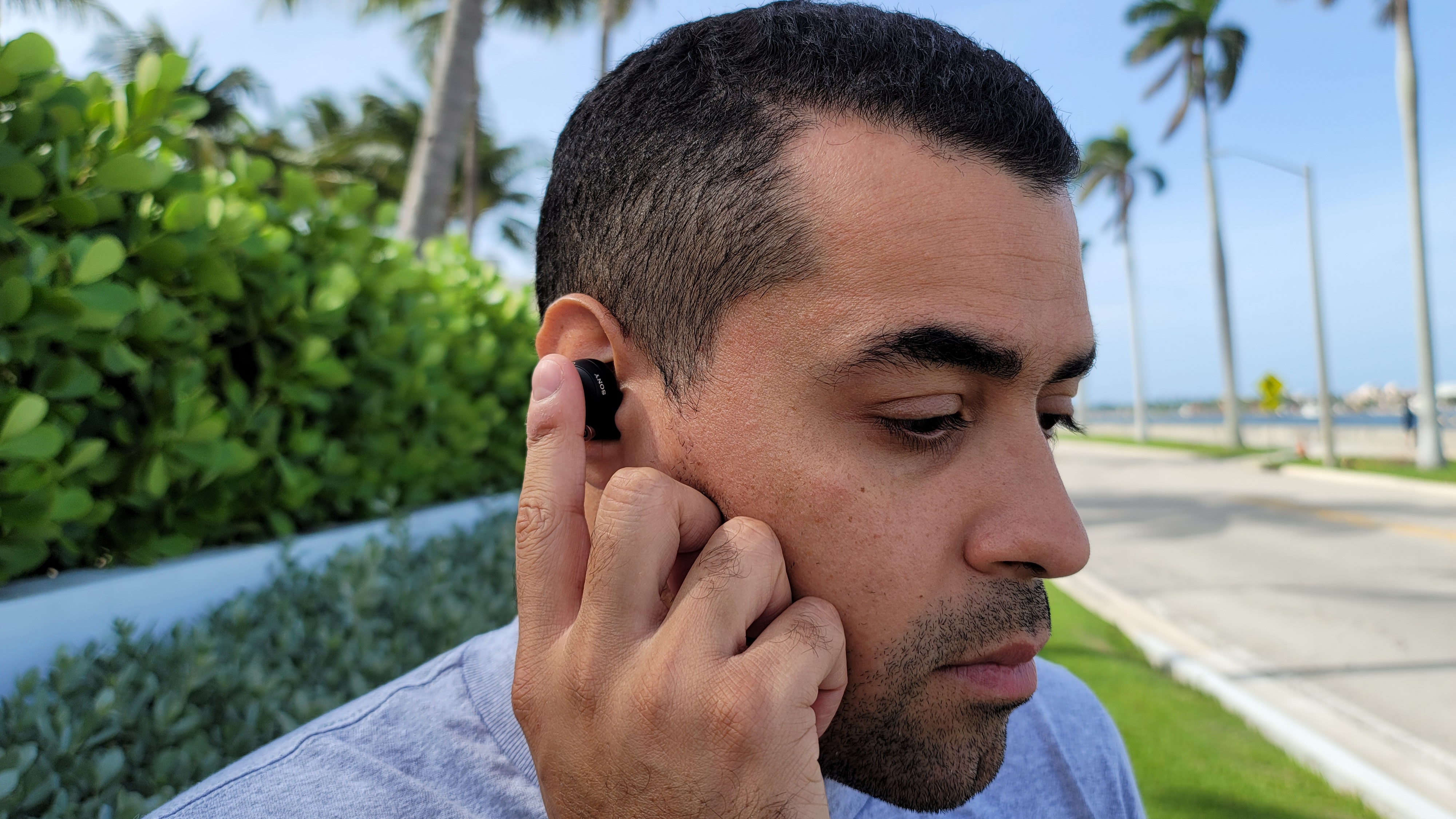
These are some of the most intelligible pairs of wireless earbuds out there, boasting touch controls, on-ear detection, and digital assistant support. Only one of them has the more extensive control scheme, though: the WF-1000XM4.
Sony programmed a full suite of media controls into its buds to manage everything from playback to volume to ANC activation. The WF-1000XM4 registers the assigned tap and hold gestures accurately and experiences zero lag. Motion detection performs similarly, placing music or videos on pause when removing the buds from your ears. We’re also fond of innovative features like Quick Attention that drops volume down to 10% for clearer transparency and Speak-to-Chat to pause music whenever speaking.
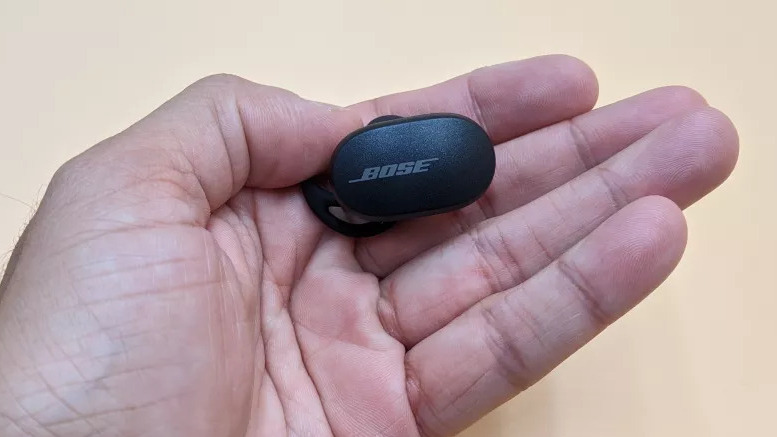
Bose gave the QuietComfort Earbuds similar controls, though they are limited in functionality. It’s nice that the latest software update added on-board volume, but you need to be selective with what controls you assign, as you’re only allowed to assign one per bud. In addition, double taps and long presses are the only input methods. On-ear detection works well.
Where the QuietComfort Earbuds make up for their restricted controls is digital assistance. Bose’s mic array is exceptional and doesn’t miss a syllable when spewing long-winded requests. Google Assistant and Siri operate smoothly, and answer voice commands quicker than they register them. Much of the same can be said about the WF-1000XM4, except that Sony went a step further and added Google Assistant and Alexa integration, allowing you to activate either AI bot by saying their respective action phrase: “Hey Google” or “Alexa.”
Winner: Sony WF-1000XM4
Sony WF-1000XM4 vs. Bose QuietComfort Earbuds: Sound quality
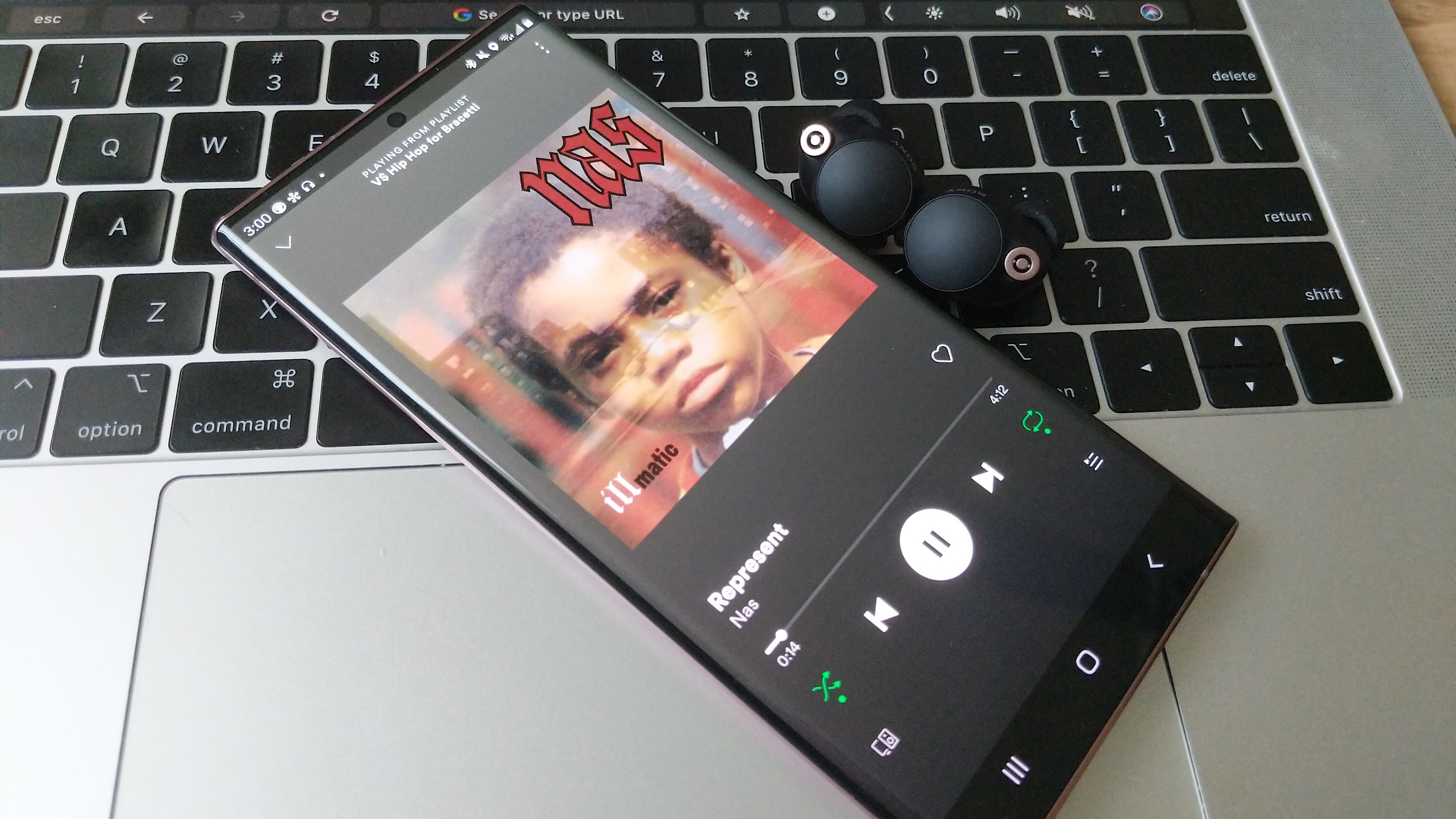
Instead of copying and pasting the WF-1000XM3’s sound profile, Sony chose to refine it, giving the WF-1000XM4 more balanced, full-bodied sound. Mids have a natural feel to them, highs are prominent, and lows, while scaled back this time around, are still deep. Subtle nuances and imperfections won’t go unnoticed, especially when enabling DSEE Extreme, which is fantastic for improving fidelity on low-fi tracks and poorly ripped MP3 files.
Sony also added 360 Reality Audio support to give listeners a surround-sound-like experience when listening to tracks on compatible streaming services like Deezer and Tidal. LDAC, AAC, and SBC codecs ensure the highest quality sound over Bluetooth.
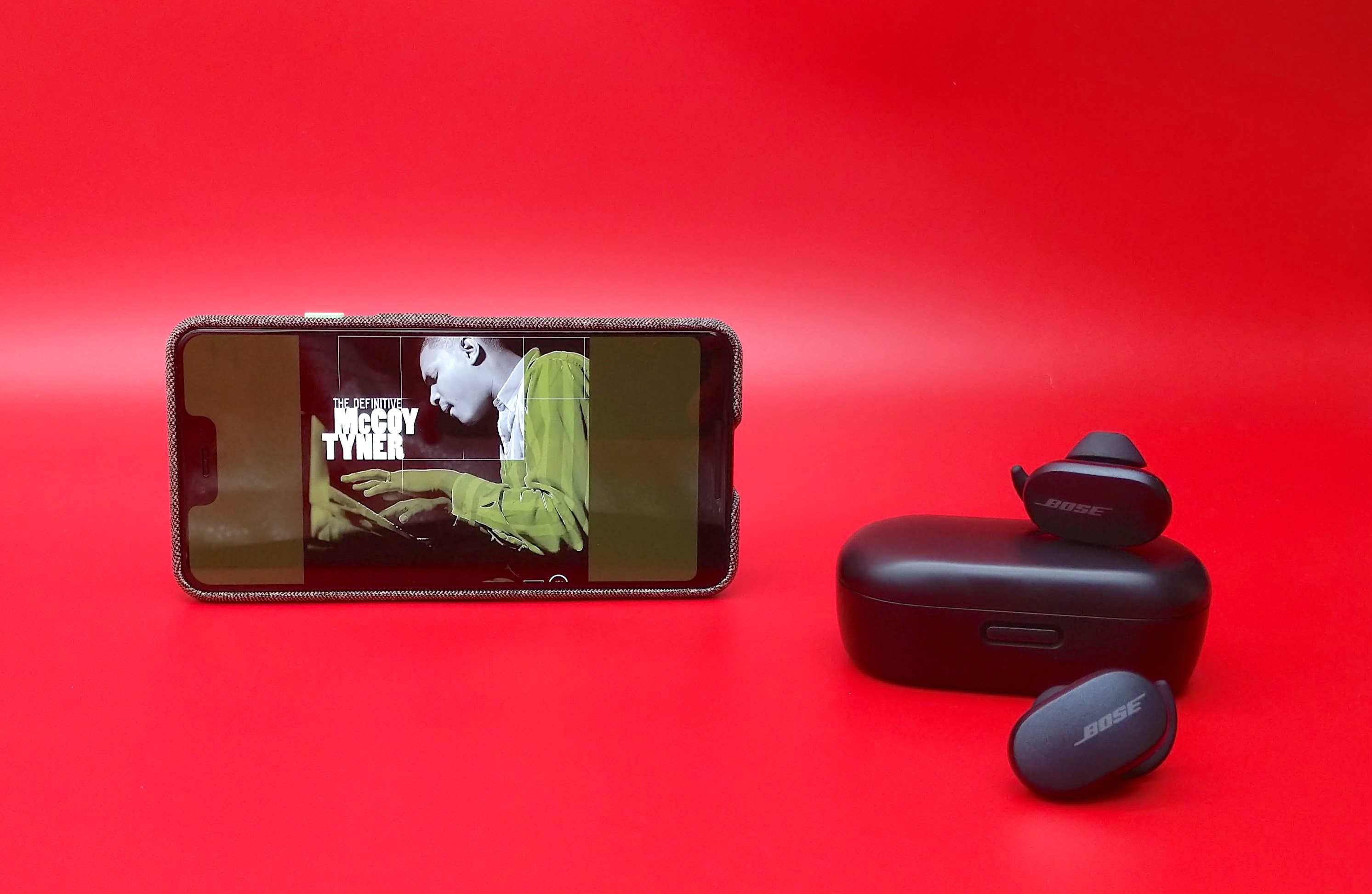
The fact that the QuietComfort Earbuds have a similar frequency curve to the 700 Headphones is impressive. Bose’s Active EQ technology and proprietary drivers produce warm, pleasant audio, highlighted by crisp and detailed mids. Bass is transparent, but also lacks punch on certain tracks. The buds could have benefitted from louder volume, which would have given the low end a noticeable boost, and LDAC codec support.
Winner: Sony WF-1000XM4
Sony WF-1000XM4 vs. Bose QuietComfort Earbuds: Active noise cancellation
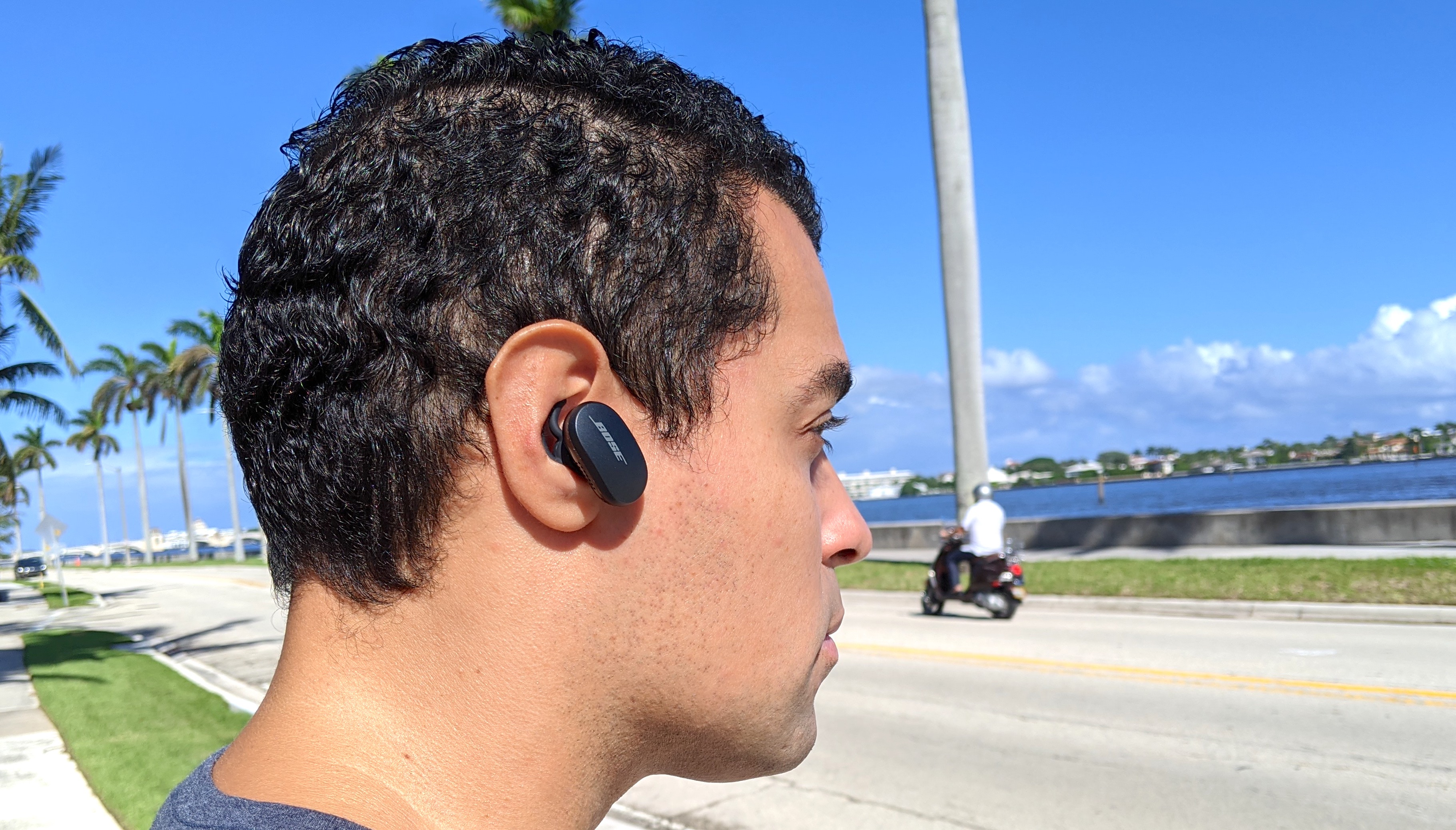
We have yet to test a pair of wireless buds that can outperform the QuietComfort Earbuds on the ANC front. Again, it’s remarkable how these buds nearly match the noise neutralization of their over-ear sibling and come with 10 adjustable levels of noise cancellation. They can block out about 90% of ambient noises across the frequency spectrum. Much of the ruckus we encountered during commutes didn’t distract us. This consisted of barking dogs, dump trucks, and a large protest crowd. Even loud, blaring noises like construction tools and sirens sounded more like background effects on songs or movies we had playing at the time.
One major selling point of Bose’s ANC is its ability to blend with Transparency mode. Not only does this ambient-listening feature work exceptionally well to gain a greater sense of your surroundings, but also enabling ANC at the same time makes external noises more distinctive and less harsh.
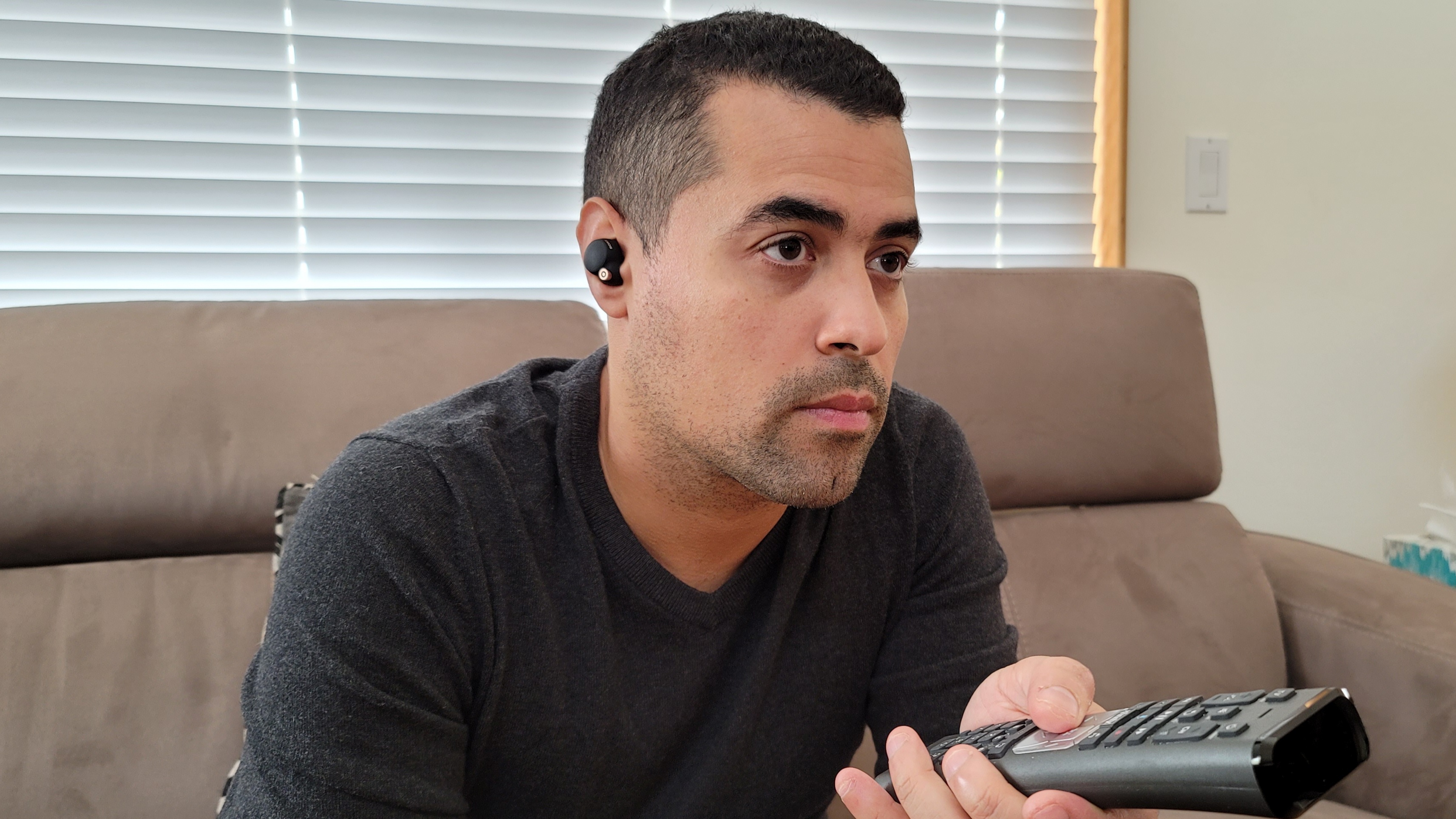
Sony attempted to do the same as its rival by giving the WF-1000XM4 the same adaptive ANC as the WH-1000XM4, one of the best over-ear headphones ever. While very effective, it is a step down from what the over-ear variant delivers. You won’t hear any car horns and construction transpiring from about a block away.
The same goes for talkative commuters or outdoor joggers having conversations on their Apple AirPods. However, the QuietComfort Earbuds drown out wind and high frequency noises better, in particular, baby cries and vehicle engine rumbling.
Ambient Noise Control is Sony’s version of transparency mode and it’s very intricate with up to 20 levels that can be adjusted in the companion app. The higher you go, the more noise these buds let in. There is an option to focus on voice, which comes in handy when stopping for brief chats, along with an automatic switching setting that adjusts transparency based on your actions and the locations you consistently visit.
Winner: Bose QuietComfort Earbuds
Sony WF-1000XM4 vs. Bose QuietComfort Earbuds: Special features and apps
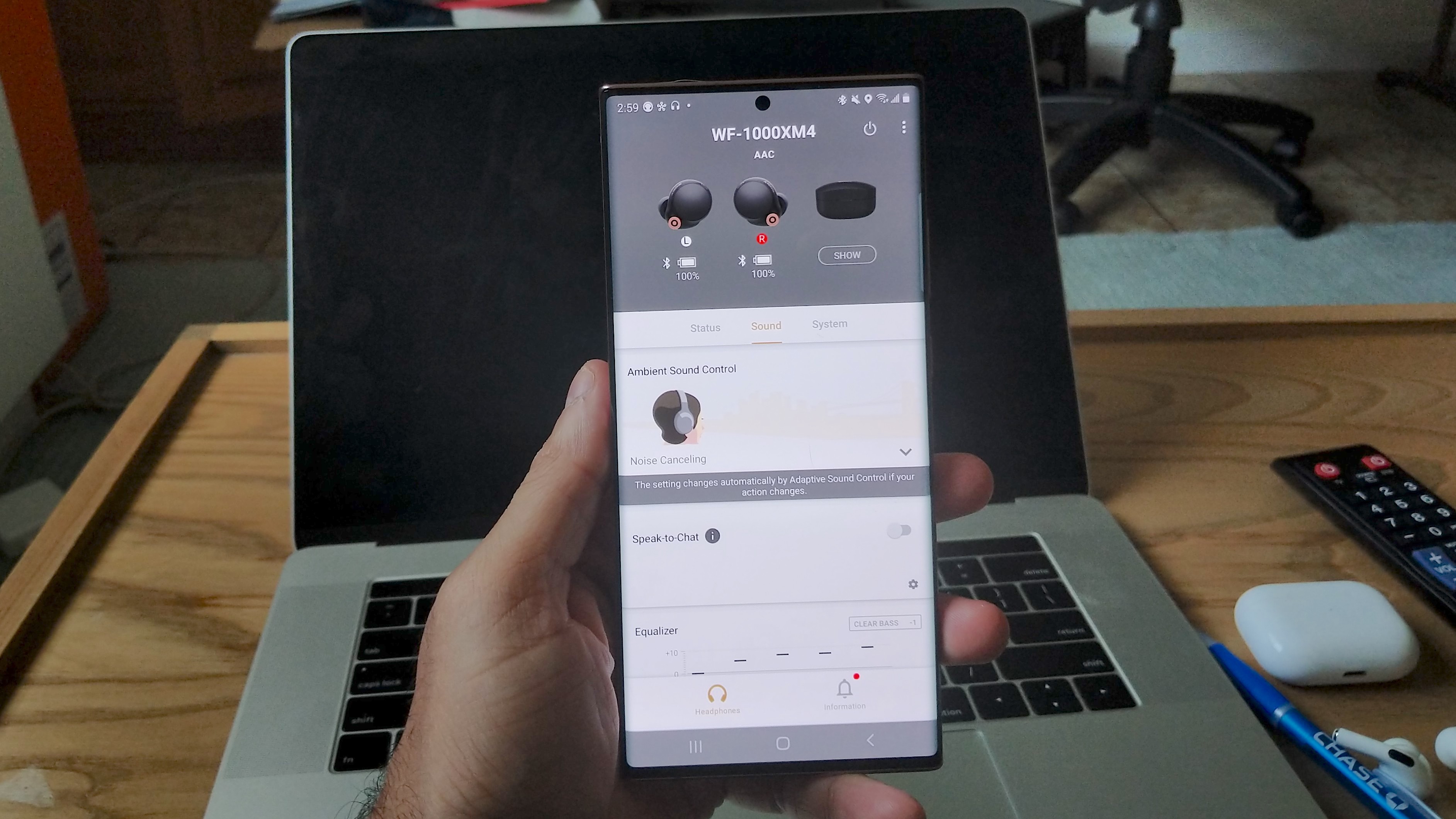
The Sony Headphones Connect app is one of the most feature-laden apps available. We already touched on several standouts, including 360 Reality Audio, ANC, ambient listening, DSEE Extreme, speak-to-chat, and Quick Attention to just to name a few. Now let’s discuss the rest.
There is an Equalizer to personalize audio, which will likely be used by those who want to ramp up the bass levels. You have the freedom to tweak frequency levels and create your own sound profiles or select from eight well-engineered presets: Bass Boost, Bright, Excited, Mellow, Relaxed, Treble Boost, Speech, and Vocal. Below the EQ is a Bluetooth Connection Quality setting to prioritize performance by sound quality or connectivity. Rounding out the app are battery level indicators for both earbuds and the charging case, toggle controls for multiple functions, a music player and firmware updates.
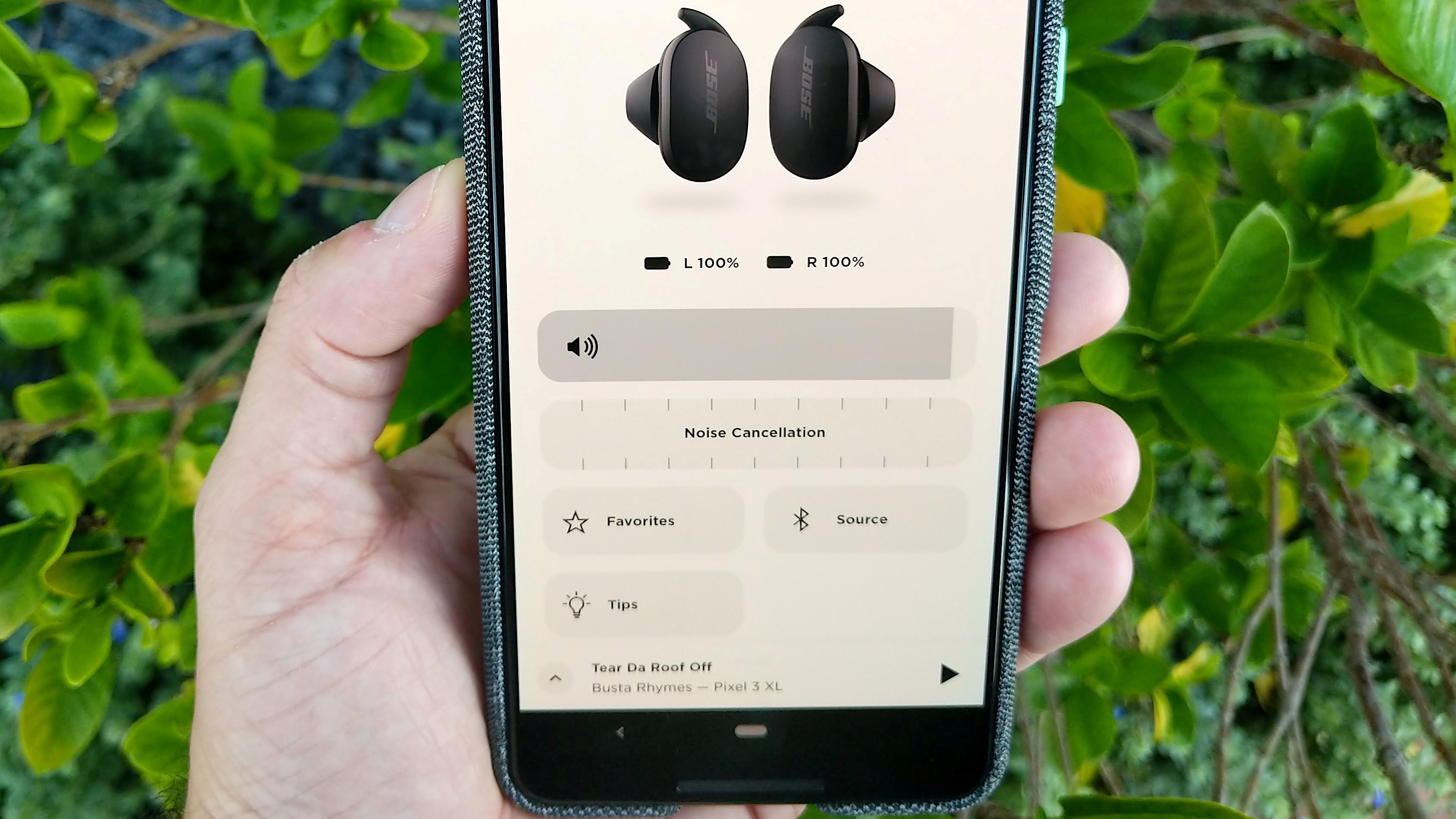
The Bose Music app comes with very little functionality. All you have are battery level indicators, toggle controls, firmware updates and a Self Voice mode that lets you hear yourself louder on phone calls. A new update apparently lets you control noise cancellation and activate transparency mode with you voice, but this feature is only available to Xiaowei voice assistant users in China. The QuietComfort Earbuds also lack an adjustable EQ and Auto-Off function to put the buds in sleep mode, two features that remain exclusive to the Bose 700.
Sony added Bluetooth 5.2 to the WF-1000XM4, which delivers faster and reliable connectivity, along with quick pairing perks such as Google Fast Pair to instantly connect to Android devices. The QuietComfort Earbuds operate on Bluetooth 5.1 and can pair quickly to devices, no matter the platform.
Multipoint technology isn’t available for either model. Sony also decided to ditch NFC, so you won’t be able to effortlessly pair the buds by tapping the charging case on the back of a compatible smartphone.
Winner: Sony WF-1000XM4
Sony WF-1000XM4 vs. Bose QuietComfort Earbuds: Call quality
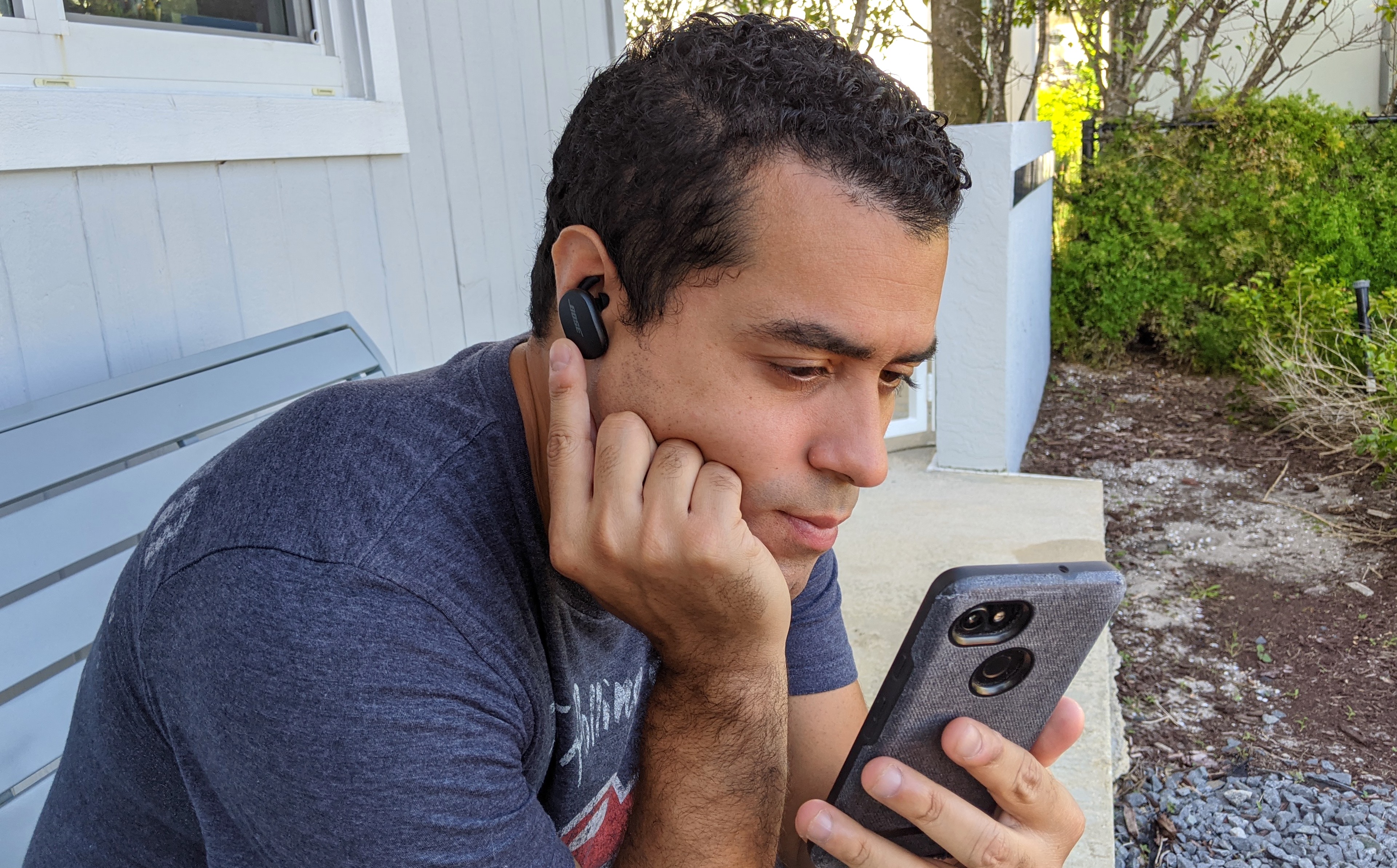
When it comes to call quality, the QuietComfort Earbuds are top of the best headphones with a mic for voice and video calls. Voices come through so loud and clear that people will think you’re speaking directly into a smartphone. More importantly, Bose’s ANC technology keeps background interference to a minimum during chats.

Expectations were high for Sony to fix call quality on the in-ear Mark series, and sadly, the WF-1000XM4 disappoints. Muffling is a persistent problem, plus the mics pull in more ambient noise than they block out. Wind resistance is decent, but that is only compared to the WH-1000XM3, which was terrible for use in drafty conditions. We only found these buds useful for video calls in silent settings.
Winner: Bose QuietComfort Earbuds
Sony WF-1000XM4 vs. Bose QuietComfort Earbuds: Battery life
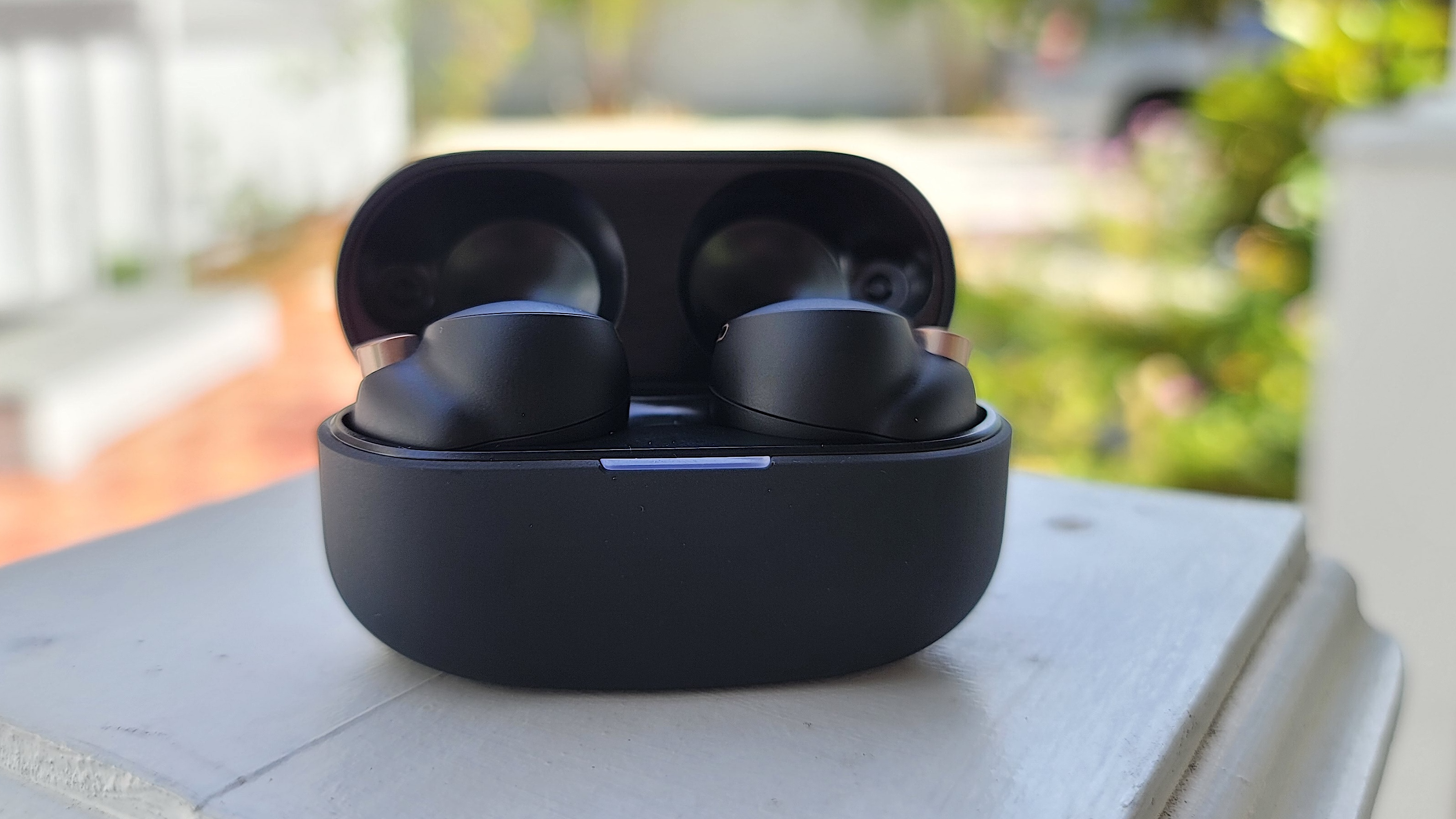
Sony increased playtimes on the WF-1000XM4 to 8 hours with ANC on, which is really about 7 hours when factoring in high volume, streaming, and special features. You can extend this to 12 hours when turning off ANC. This is higher than most models and highly sufficient for travelers who require noise cancellation on the go. The charging case can hold between 24 and 36 hours, depending on how you use the buds, plus a 5-minute quick charge earns you 1 hour of listening time.
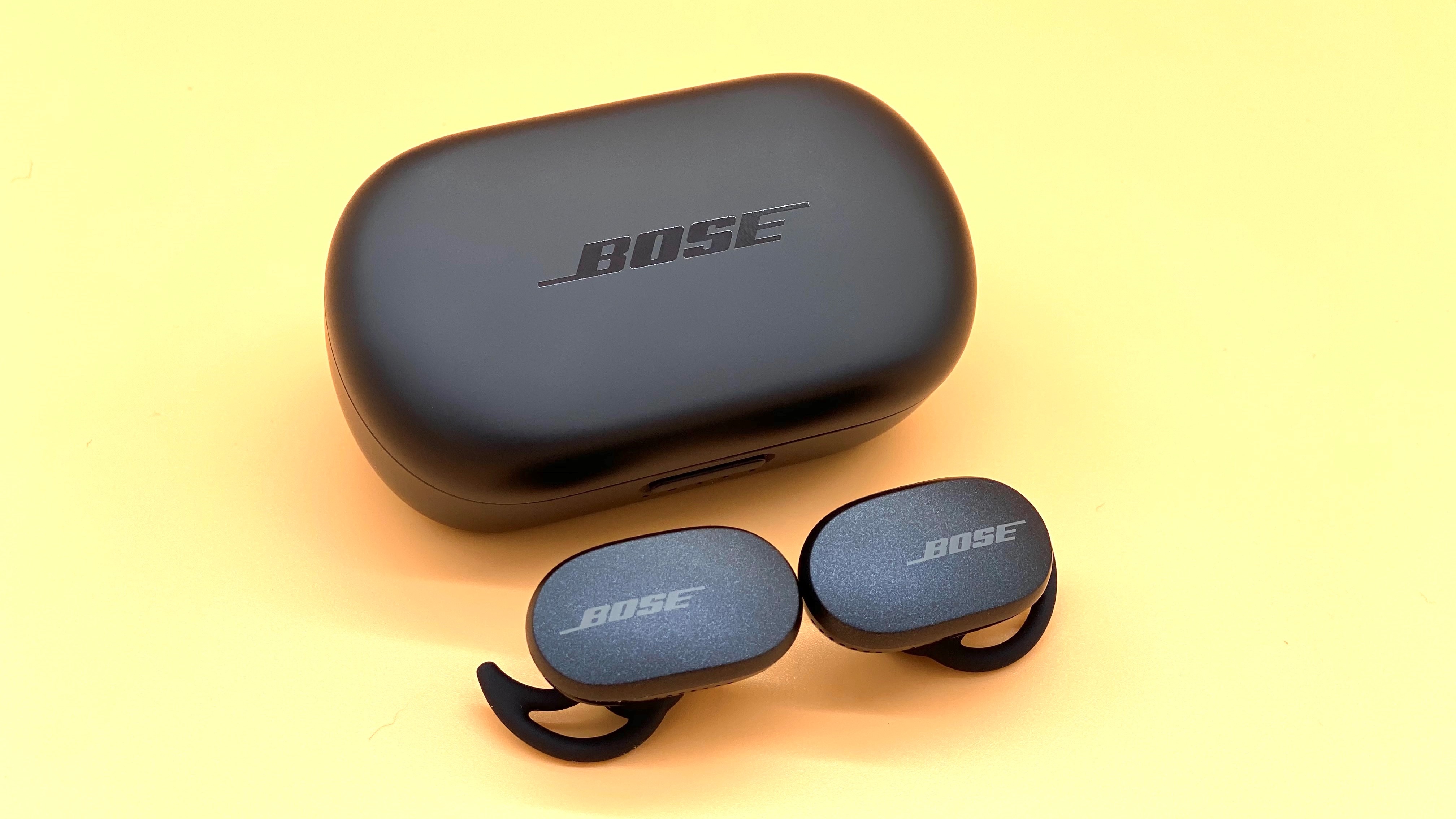
Battery life was never Bose’s strength, so it comes as no shock that the QuietComfort Earbuds underperform with just 6 hours of ANC playback. Sure, it’s higher than the AirPods Pro (4.5 hours), but playtimes drop quickly when using special features. It doesn’t help that you can’t disable ANC, and setting noise cancellation to level 0 only places the buds in Transparency mode. The charging case won’t get you much on the go either, maxing out at 18 hours when fully charged. A 15-minute quick charge generates 2 hours of listening time.
Both models support wireless charging.
Winner: Sony WF-1000XM3
Sony WF-1000XM4 vs. Bose QuietComfort Earbuds: Verdict
Variety is everything on Sony’s latest wireless earbuds, from the advanced features that enhance what is already a stunning sound profile to the smart controls that place endless functionality at the tip of your finger and tongue. Noise cancellation is highly effective. Battery life is also a huge component of the WF-1000XM4 that earns you long ANC playtimes. The only things keeping this model from receiving a perfect score are some missing features, mediocre call quality, and an unstable fit.
| Header Cell - Column 0 | Sony WF-1000XM4 | Bose QuietComfort Earbuds |
|---|---|---|
| Price and value (5) | 4 | 3 |
| Design (15) | 11 | 9 |
| Controls (10) | 8 | 7 |
| Audio quality (20) | 19 | 18 |
| Active noise cancellation(20) | 18 | 20 |
| Special features and apps (15) | 13 | 10 |
| Call quality (5) | 3 | 5 |
| Battery life (10) | 9 | 7 |
| Total score (100) | 85 | 79 |
Bose played to its strengths when developing the QuietComfort Earbuds, which was both a wise and poor decision. You’re getting best-in-class ANC that silences the majority of ambient noise. Being able to enable both ANC and Transparency at the same time to hear ambient noises more naturally is awesome. Sound is clean and neutral, though the lack of customization and exclusive audio features hurts its sonic value. But it is the low battery life and monstrous design (case and earbuds) that are just too hard to overlook, especially when factoring in the high MSRP.
- More: Sony WF-1000XM4 vs. Jabra Elite Active 75t: Which are the better ANC buds?
Sign up to get the BEST of Tom's Guide direct to your inbox.
Get instant access to breaking news, the hottest reviews, great deals and helpful tips.
A lifestyle journalist with an affinity for consumer products, Alex has over a decade of experience and has worked with popular publications such as Complex, Thrillist, Men’s Health, Gear Patrol, AskMen, and Hoop Magazine. He currently focuses on audio, reviewing the most coveted headphones in the market for both Tom’s Guide and Laptop Magazine.

